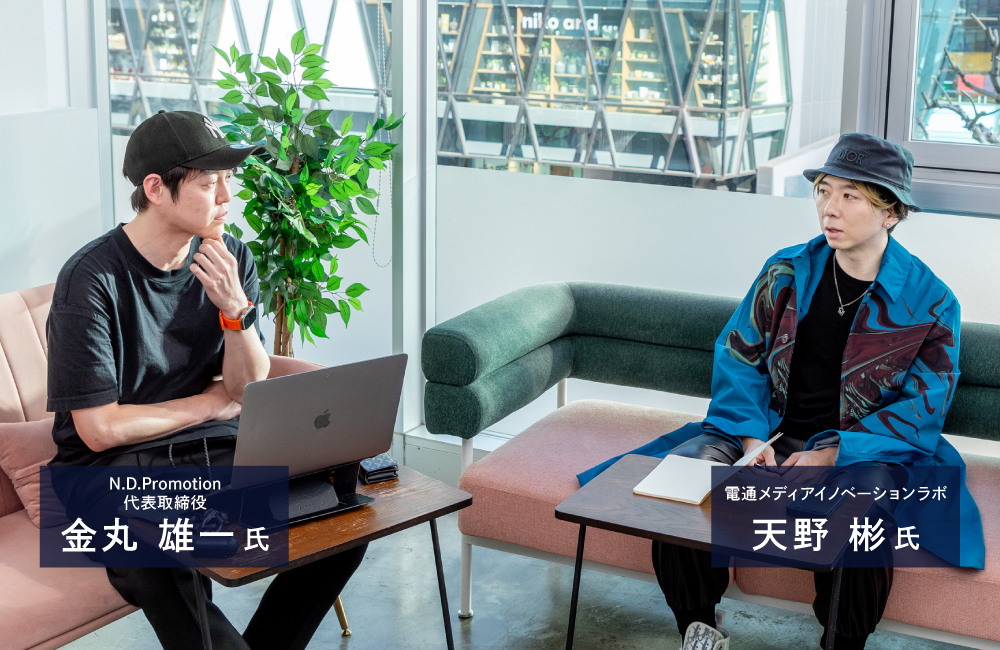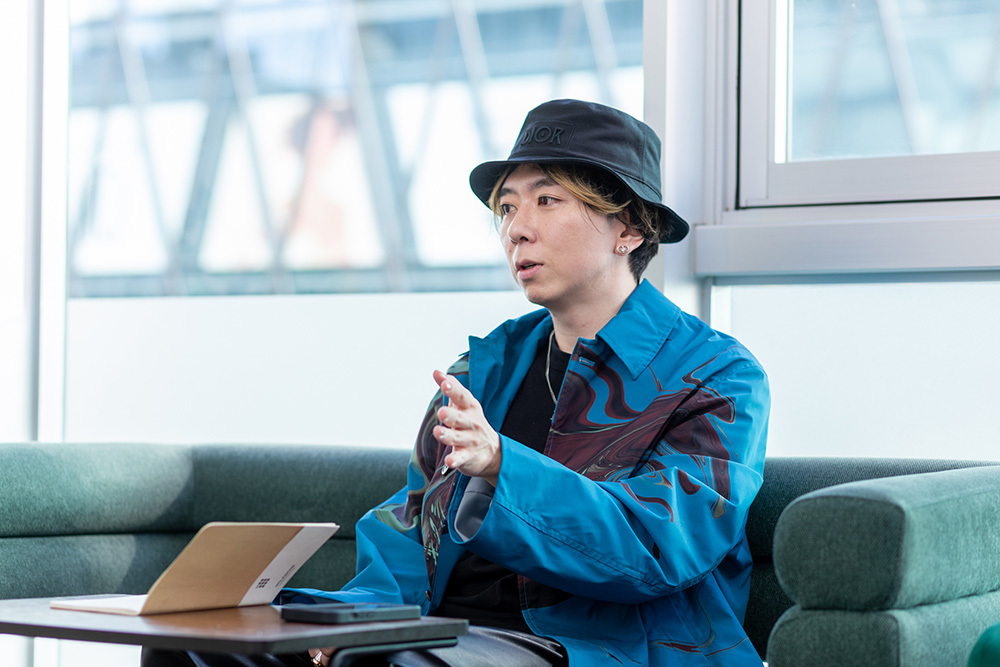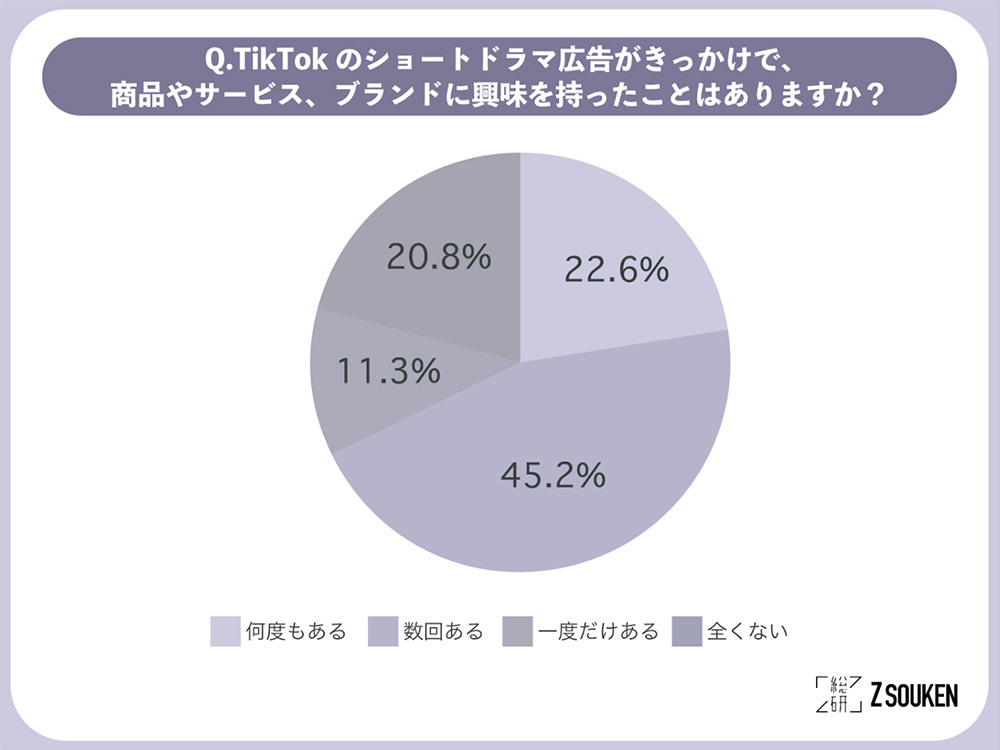The format known as "short videos," lasting just tens of seconds, has gained widespread user acceptance, with more companies utilizing it for advertising and PR. In this series, Akira Amano of Dentsu Inc. Media Innovation Lab shares insights on SNS marketing centered around short videos.
Previous articles have explained the innovative nature of TikTok, a leading short video platform, and the mechanisms behind "TikTok sales."
This time, we welcomed Yuichi Kanemaru (CEO of N.D.Promotion), who actually produces short videos using talent and influencers, as a guest. We discussed what constitutes effective use of TikTok short dramas (essentially, a "sure-win" strategy). (Interviewed on April 10, 2024)
N.D.Promotion is an entertainment agency primarily engaged in four business areas
- Talent agency business representing actors, influencers, and other talents with strong social media influence
- Advertising promotion business: Planning proposals, casting, and creative production centered around SNS-based advertising
・Media operations running "Nom de plume," a platform disseminating the latest trends to Gen Z women
・Operation of the think tank organization "Z Research Institute," which conducts research and insight analysis on Generation Z

Product PR primarily uses a "two-pronged approach" of short dramas and spin-off commercials
Amano: We often exchange information, but I'm really looking forward to this formal interview! Mr. Kanemaru, you have deep insights into Generation Z and produce short videos for social media platforms like TikTok, right?
Kanemaru: Yes. Our agency represents talent and influencers with strong TikTok presence, and we receive many requests from companies and brands for TikTok-based PR. We have an in-house production team, and we're increasingly creating short dramas for social media.
Amano: What's driving the increase in corporate requests for PR posts on TikTok?
Kanemaru: It seems the underlying issue is that brands are finding it harder to connect with Generation Z. Many companies are exploring how to raise awareness of their products or services among Gen Z and turn that awareness into actual experiences. Sometimes, it's also about wanting to try new PR approaches. Recently, for one company whose customer base was aging, we proposed and produced a short drama to create new touchpoints with Generation Z.
Amano: It's true that using TikTok for Gen Z has become quite widespread. In that context, what kind of promotion does short drama offer?
Kanemaru: Short dramas primarily employ a technique called "product placement," where products are integrated naturally into the storyline. Additionally, we sometimes produce spin-off commercials separate from the main short drama. Unlike the main content, these are created with the explicit purpose of directly promoting the product.
While the drama itself can be enjoyed purely as content, since product exposure isn't the main focus, the appeal of its features tends to be weaker. That's where the spin-off commercials come in—their goal is to encourage viewers who've watched the drama to dig deeper and gain a better understanding of the product.
Amano: So it's a two-part structure—short dramas for awareness and spin-off commercials for deepening understanding—to cover the funnel. It reminded me of TV programs plus commercials. Was this the intended approach from the start?
Kanemaru: No, we didn't start out producing the short dramas with this two-part approach. After making several short dramas and incorporating client feedback, we realized there were many elements that couldn't be fully conveyed through product placement in the main drama alone. That's why we shifted to the two-part format.
Fundamentally, it's difficult for companies to allocate budgets solely to the main drama where products appear only "subtly." I think the approach is more like creating the main drama with the budget for the spin-off commercial plus a little extra. Within a single commercial contract, the actors also appear in the main drama, so there are cost benefits for the advertising company too.
Romance and mystery are the two most popular content genres
Amano: It's fascinating that "winning formulas" like the ones you just described are becoming established for TikTok PR posts. Are more companies requesting short drama production?
Kanemaru: I definitely feel the number is increasing. When we started producing these about five years ago, most clients weren't even aware of short dramas on social media. Nowadays, it seems common knowledge that this approach exists, and it's becoming a standard method for communicating with users.
Amano: What industries do most of your clients come from?
Kanemaru: There's no particular bias; it's genre-agnostic. We've created short dramas for clients across a wide range of industries, including apparel, recruitment, cosmetics, consumer products, web, and IT services.
Amano: Could you revisit the definition of short dramas and their appeal?
Kanemaru: While each episode is only a few minutes long, short dramas are popular content that appeals to people of all ages and genders, just like TV dramas. Depending on the story, there are main characters, supporting characters, and various other characters with distinct personalities and backgrounds. This strength allows viewers to easily relate to characters they see themselves in and personalize the unfolding story.
Amano: The opening hook of short dramas is carefully crafted to prevent viewers from swiping away, featuring distinctive hooks designed to evoke empathy. By the way, romance and mystery seem to dominate the short drama genre. Are these genres actually the strongest performers?
Kanemaru: Looking at overall trends, these two genres tend to see higher viewership. Romance content often allows viewers to relate it to their own experiences. Think of it as relatable "romance tropes" content. For mysteries, works with clever gimmicks that make you wonder "What happens next?" tend to stand out. When talking with short drama directors, I sometimes hear that genres like horror don't seem to fit well with short dramas, making it harder to boost view counts. Of course, there are ways to increase viewership depending on the approach, but I feel there is some degree of suitability depending on the genre.
Amano: You're right, horror isn't something you often see in short dramas. Though watching horror-themed game playthroughs or clips can be pretty entertaining.
Kanemaru: This is just a hypothesis, but maybe the vertical format isn't a good match. Horror needs immersion to feel scary, not just light viewing. The horizontal format, with its side margins, creates that tension of not knowing what might appear. We might need to develop horror techniques unique to the vertical format.
Amano: Do you have any tips for getting more viewers to watch short dramas?
Kanemaru: For TikTok, I focus on creating a hook in the "drama opening" to grab viewers. For example, structuring it to show the most intense scene first is effective. Also, since more TikTok users watch with sound on compared to other platforms, using music to draw them in or effectively incorporating sound effects (SE) are crucial elements.
Amano: Short video services beyond TikTok are also gaining traction. Could you share any differences when producing short dramas specifically for Instagram Reels?
Kanemaru: We have experience producing for both, but compared to Instagram Reels, TikTok seems to get more views. For Reels, it's important to create short dramas that fit Instagram's polished aesthetic. However, this often results in content blending in too much with other posts, making it harder to get unexpected reactions or significant engagement. On TikTok, though, a beautifully shot video suddenly appearing amidst the diverse content tends to grab more attention.
Amano: So that "discrepancy" is what makes people stop swiping, right? Speaking of which, there was also research on how short dramas influence purchasing behavior, wasn't there?
Kanemaru: According to Z Research Institute's survey, over 67.8% of Gen Z respondents said TikTok short drama ads sparked their interest in products, services, or brands. Furthermore, 43.9% of Gen Z respondents reported actually purchasing products or using services as a result (※1).
Amano: This clearly shows TikTok short drama ads are expanding awareness and influencing purchasing behavior among Gen Z. In my own work, I've discussed the optimal balance between UGC (User-Generated Content) and PGC (Professional-Generated Content). It's evident that on TikTok, while UGC is important, carefully crafted PGC is also in demand and proving effective.
Next time, we'll hear from Mr. Kanemaru about Gen Z trends on TikTok and how the advertising and entertainment industries should engage with Gen Z talent and influencers.
※1 Survey Overview: Research Institute: Z Research Institute; Survey Period: December 16-17, 2023; Survey Method: Online survey; Survey Participants: Nationwide, 135 females aged 17 and under, 68 females aged 18-22, 12 females aged 23-25, totaling 215 females. Percentage composition is rounded to the second decimal place, so the total may not add up to 100%.
※2 UGC (User Generated Content): Content created or generated by general users.
※3 PGC (Professional Generated Content): Content produced or generated by professionals.













